#cream blotched tabby
Text

Cream blotched tabby - e 22
Genotype: A_ dd __ ii mcmc OO/O- spsp titi ww
Black silver mackerel tabby - ns 23
Genotype: A_ D_ E_ I_ Mc_ oo/o- spsp titi ww
(What do these letters mean?)
#polls#tournament poll#round 1#nfo color tournament#cream blotched tabby#black silver mackerel tabby
15 notes
·
View notes
Note
My first character I decided to design. He name is Fairypaw/tai. Shes a medicine cat apprentice from Windclan. Shes a gray Mackerel tabby.

Cute!!
If you wanna hear a Genetic Realism Critique™️ lmk but from an art pov...
V pretty colours :3 I love the minimal blotches & the stripes are drawn nicely, I esp like the one on the leg that's both in the cream & the white. having the all-white tail balanced out by the white eyebrows + inner ears is a good idea.
I think my only negative critique would be the shade of green (eyes) could stand to stand out more against the gray; it seems about the same lightness/darkness level so there's not a lot of contrast which draws my eyes to her body instead of her face, where the emotion & character is
lovely lil guy :3
9 notes
·
View notes
Text
Glossary
Agouti: Ticked Tabby without residual markings, lacks banding on legs and tail.
BCR: Burmese Color Restriction, Sepia.
Blue Cream: Blue Tortoiseshell, Dilute Tortoiseshell.
Braided: Mackerel tabby affected by the bengal modifier gene, causes stripes to split vertically with a hollow center. May also be referred to as “candle flame.” Applicable to Toyger.
Bronze: Black Spotted Tabby. Applicable to Egyptian Mau.
Brown: Black-based Tabby. Followed by description of pattern type, i.e. Brown Classic Tabby. Synonymous with “Sable” in Burmese, referring to Black Sepia.
Buff: Cream.
Calico: Tortoiseshell and White, ratio is loosely defined. Typically characterized by large patches of distinct color without brindling.
Cameo: Red Silver, Red Smoke. Followed by description of tabby type if known, i.e. Cameo Mackerel Tabby.
Champagne: Chocolate Mink.
Chestnut: Chocolate. May be stated on it’s own if self or followed by a description of pattern, i.e Chestnut Tortoiseshell. Applicable to Oriental breeds.
Chinchilla: Shell. Applicable to British breeds.
Cream Cameo: Cream Silver. Followed by description of tabby type if known, i.e. Cream Cameo Mackerel Tabby.
Ebony: Black. May be stated on it’s own if self or followed by a description of pattern, i.e Ebony Spotted Tabby. Applicable to Oriental breeds.
FEX: Full Expression, no color restriction gene.
Flame: Red-based color restriction. Applicable to the colorpoint, mink and sepia patterns.
Gray: Blue.
Lavender: Lilac. May be stated on it’s own if self or followed by a description of pattern, i.e Lavender Classic Tabby. Applicable to Oriental breeds.
Lynx: Tabby with color restriction. Applicable to the colorpoint, mink and sepia patterns but most often used alongside colorpoint.
Marbled: Classic tabby affected by the bengal modifier gene, results in dark-outlined blotches with paler colors in the center. Pattern is oftentimes more chaotic than the typical classic tabby. May refer to the standard, typical classic tabby pattern in breeds unrelated to Bengals.
McTabby: Mackerel Tabby.
Melanistic: Black Solid. Applicable to Bengal.
Natural: Black Mink, Seal Mink.
Orange: Red.
Patched: Tortoiseshell Tabby, Torbie. Followed by description of tabby type if known, i.e. Patched Classic.
Platinum: Lilac Mink or Lilac Sepia.
Rosetted: Spotted tabby affected by the bengal modifier gene, results in larger spots with hollow centers of color distinct from the base coat. Applicable to Bengal.
Ruddy: Black-based Agouti with high rufousing giving an auburn appearance. Synonymous with “Usual.” Applicable to Abyssinian and Somali.
Sable: Black Sepia, Seal Sepia. May be followed by description of pattern, i.e. Sable Tortoiseshell.
Seal: Black-based color restriction. Applicable to the colorpoint, mink and sepia patterns.
Sorrel: Cinnamon-based Agouti with high-rufousing giving a warm orange appearance. Also known as “Red” in applicable breeds. Applicable to Abyssinian and Somali.
Snow: Colorpoint, mink or sepia color restriction. Applicable to Bengals.
Tipped: Shaded. Applicable to British breeds.
Usual: Black-based Agouti with high rufousing giving an auburn appearance. Traditional color of applicable breeds. Synonymous with “Ruddy.” Applicable to Abyssinian and Somali.
31 notes
·
View notes
Text
Learning new cat colour genetics. Carnelian, kaparti, phoenix, caramel/apricot and pink eyed dilution.
Basically, I learnt most of the genetics of cats and some rodents from a book called the Colour Inheritance in Small Livestock by Roy Robinson. Printed 2013.
But new genes has since been discovered, part 3

Carnelian (kopal, serdolik)- kurilian bobtail
What is it- starts out reddish, then turns pure red with dark tail tip with age (no dark hairs, except tail tip).
Genetics- co-dominant extension gene, ec (sometimes es). In single is golden, in double is Carnelian.
Notes-
Single tabby with Inhibitor gene looks like bimetallic (single self with I is normal smoke)
Single with wideband gene is brownish golden with dorsoventral paleness.
With self colourpoint is taupe points

Kaparti- laperm, lykoi, randonbred cats in carpathians, Transylvanian breed.
What is it- start light and grizzled with white points. With age is almost black, with white points. Sometimes have black face.
Genetics- dominant,
Notes-
Type of roan
Tempreture based points
With colourpoint- is powdery points


Salmiak- randonbred
What is it- originally called Finnish mutation, it causes a roan effect, with a black head and white spots.
Genetics- KIT gene (white mutation). Recessive
Notes-
Found in Finland and Hungary in randonbred cats
Actualy discovered in 2007, despite the gene being discovered as a KIT mutation in a study only recently.
Named for the Finnish salted Liquorice, which its pattern resembles
Originally thought to be a variant of homogenous Kaparti


Phoenix/pseudo cinnamon- Maine coons
What is it- turns red cats into mahogany
Genetics- dominant.
Notes-
Born golden with blue paws and tail
Changes pads colour and brighter eyes
Opposite to extension gene
In self cats the tabby markings are visible as mahogany on bluish background.
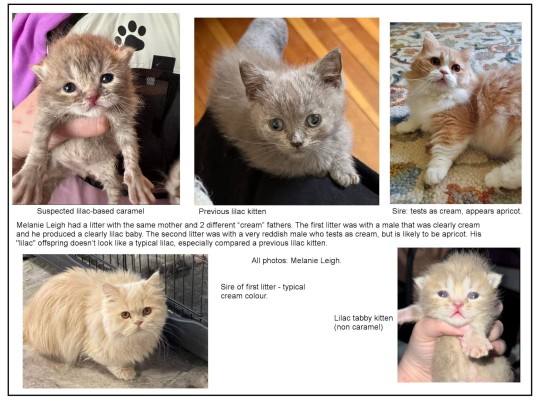

Caramel/apricot- Oriental shorthair, Siamese, Balinese, Oriental Longhairs, Tonkinese, Burmese, Birman and British Shorthair/Longhair
What is it- transforms dilute colours - blue, lilac, fawn, cream - into caramel (in black-based colours) and apricot (in cream cats)
Genetics- Dilute modifier gene (Dm). Dominant in dilute cats. Masked in dense.
Notes-
Have metallic sheen on them.
Doesn't effect dense colours (black, choc, cinnamon, red).
Blue caramel is sometimes called just caramel and cinnamon caramel is sometimes called Taupe.


Pink eyed dilution in cats- two accounts in domestic (both female). In Donskoy (Milkdud)
What is it- It changed black to a fawn/bluish-tan colour and the eyes had a red pupil and gold flecked red/pink irides (iris)
Genetics- recessive, modification of eumelanin. "oculocutaneous albinism with the identification of a splice-site variant in Hermansky–Pudlak Syndrome 5 gene”
Notes-
"Black cat hair (non-agouti) contains numerous small dark brown to black melanin granules uniformly distributed throughout all portions from base to tip of the hair.
Smoke cat hair (non-agouti + inhibitor (silver) gene) has a scarcity of melanin granules at the base of the hair.
Blue cat hair (non-agouti + dilution) has larger basic melanin granules, but still relatively regularly shaped, and a non-uniform distribution of granules.
Chediak-Higashi Smoke cat hair trait has even larger melanin granules than the blue dilution, and they are relatively irregularly shaped. All of the cats were Persian and resembled blue smoke Persians.
The pink-eyed dilute cat hair had very small yellowish-brown melanin granules and very few larger granules. Under the microscope, some lighter banding could be seen on the hairs, but the tip was coloured. The base of the hair was paler than the tip (agouti banding)."
Is not c gene. Like albino
She was a blotched tabby (dominant) with moderate white spotting (dominant) and had a slight kink at the tip of her tail.
Was called flavism and Ukraine chocolate in Donskoy once
Has irregular heats
Has no tapetum lucidum and poor vision
Similar gene as pink-eye mouse and non-syndromic oculocutaneous albinism (OCA) in humans
#cat colours#cat genetics#carnelian#kopal#serdolik#cinnamon#fawn#caramel#apricot#kaparti#hybrid genes#phoenix#pink eyed dilution#ukraine chocolate#Salmiak#finnish mutation
7 notes
·
View notes
Text
Here is an example of Medieval theme naming and roles! What do you guys think?
Allegiances of the beginning of the First Rise of Change Arc!:
Note: I tried to list the cats under each category in order of oldest to youngest.
THUNDER KINGDOM
Monarch:
Monarch Blue of Frost - short furred, tall, slender, solid blue-gray molly, with blue eyes and some white and a distinctive white diamond star shape on her chest.
Apprentice: Squire Fire
Advisor:
Advisor Red of tails - small, long furred, tortoiseshell tom with a distinctive ginger tail and orange eyes.
Apprentice: Squire Dust
Herbalist(s):
Herbalist Spotted of leaves - beautiful, fluffy, dark tortoiseshell molly with a distinctive dappled coat and orange eyes.
Captain:
Captain Lion the heart - large, fluffy, golden, ticked tabby tom with fluffy thick fur around his neck like a lion's mane and green eyes.
Apprentice: Squire Gray
Knights:
Senior Knight White the storm - long furred, gray tabby colorpoint tom with blue eyes.
Apprentice: Squire Sand
Senior Knight Tiger the claw - big, long furred, dark brown tabby tom with unusually long front claws and amber eyes.
Apprentice: Squire Raven
Knight Dark of stripes - fluffy dark gray tabby tom with dark black stripes and yellow eyes.
Knight Bird of flight - short furred, slender, brown tabby tom with some white and a distinctive white blotch on his chest, and upper lip, and green eyes.
Knight Willow of pelts - short furred, very pale solid gray and spotted cream molly with green eyes.
Knight Down the nose - short furred, tall, long limbed, white molly with distinctive large floppy ears and blue eyes.
Knight Cricket the step - very small, short furred, prettily handsome, white cat with black and orange calico patches and orange eyes.
Knight Mouse of furs - small dull brown ticked tabby molly with yellow eyes.
Knight Shrike of tails - tall, long limbed and tailed, pale brown tabby tom with dark black stripes with some white and green eyes.
Apprentices:
Squire Dust - buff, chubby, dark brown sepia color point tom with white on his muzzle, paws, tail tip, and as a small patch on his chest and purple eyes.
Squire Raven - small, scrawny, long limbed, solid black tom with a white patch on his chest, white-tipped tail, a scar over his left eye and purple eyes.
Squire Sand - a yellowy cream tabby and solid black tortoiseshell molly with a distinctive black marking covering exactly half her face and one orange eye in the black, and one green eye in the cream.
Squire Gray - fluffy, chubby, gray tabby tom with dark gray stripes, some white and orange eyes.
Squire Fire - a short, very chubby, handsome, long furred, bright ginger ticked tabby tom with some white and green eyes.
Queens:
Senior Knight Speckle the snap - long furred cream ticked tabby tortoiseshell with gray speckle patches on her back and covering her tail and golden yellow eyes. She is the oldest nursery queen.
Senior Knight Golden the flower - beautiful, long furred, golden cream tabby molly with golden yellow eyes.
Senior Knight Frost of furs - a sleek long furred, beautiful, white molly with a gray and orange tabby calico patch over one eye, and a mostly orange calico tail with one blue eye and one green eye.
Knight Brindle the beauty - short furred, gray-brown and orange tortoiseshell molly with green eyes and some white.
Elders:
Elder Small the ear - small, short furred white tom with orange tabby patches and battered torn ears and green eyes.
Elder Sparrow of pelts - big scruffy furred dark brown tabby tom with half of his tail missing and green eyes.
Elder Fog of talons - pale blue-gray molly, with some white, as well as one clawed out eye and one yellow eye.
Elder Thrush the cloud - medium furred, sandy brown ticked tabby tom with some white, and green eyes.
Elder Dapple of tails - round, chubby, short furred, white molly with black and orange calico patches and dappled spots and yellow eyes.
Elder Rose of tails - long furred, gray and red calico molly with a distinctive fluffy rosey red tail and yellow eyes.
35 notes
·
View notes
Text
Residents of the dark forest descriptions
Residents
CreatureFall - a medium furred skinny pale ginger speckled and white tom with
cyan eyes
QuickStar/Belly - grey point short furred Tom with yellow eyes
MorningShade - a white and brown tabby medium furred Molly with yellow eyes
SparkBush - a torture and white medium furred she cat
BerryStar/Claw - a ginger medium furred Tom
RainHail - a silver and white shirt furred Molly with brown eyes
SparrowBounce - a grey tabby long furred trans Molly
Sunny - cream short furred Tom with a white muzzle, chest spot, and paws with a blue collar and olive eyes
Root - a ginger point short furred Tom
BrownMouse - brown and white king furred Tom with pale green eyes
NightStar/Flower - grey point speckled Tom with green eyes
FleaThistle - speckled brown-grey cream point singapura-selkrik rex tom with moss green eyes
HornetLeg (double dead) - orange, black, and white calico tom with yellow eyes
TawnyPaw/Trot- pale orange, white and brown calico molly with teal eyes
CrunchSnow - long furred brown molly with a white chest, belly, paws, and tail tip with olive green eyes and white stripes on her flanks and a streak above her nose.
ShrikePollen (faded) - dark grey scarred molly with grey eyes
GoblinSnap (faded) - white short furred Tom with blue eyes and brown-cream marbled blotches
GremlinPaw/Frost - pale short furred white-brown tom with pale blue eyes and white patches
CloudFang - white curly furred molly with a blue bandana and black ears, head, and stripe on back
FidgetGuts - black long furred trans Tom with green eyes a cauliflower ear, a missing back paw and a slight underbite
FishKit/Drop - cream and white trans tom with blue eyes and grey speckles
FrostPaw - white molly with brown eyes and grey back
MolePaw - brindle dark brown Tom with green eyes
Holly - grey long furred molly with green eyes and a white chest
JellyPaw/Moss - cream molly with amber eyes and short fur
PineNutPaw/Pounce - white medium furred Tom with cream patches and black stripes on his legs, base of tail, and ear with grey eyes
HoneyPudding - medium furred lean brown and cream brindle molly with webbed paws, yellow eyes, and white chest and face
IsopodBrain - Devon rex Tom with pale green eyes, ginger ear and brown patches with feathers and leaves tangled in his fur
LaughingMoss - black tom with green eyes, a pink nose, and three white paws
LionCatch - golden long furred Tom with a white chest and muzzle with yellow eyes
PatchSpring - ginger, white and grey medium furred elderly molly with scars on her muzzle and brown eyes
SmokeFleck - grey and white medium furred Tom with brown eyes
TimberStone - grey striped thin short furred Tom with yellow-amber eyes
TurtleStepper - white Tom with black spots, brown neck and cream muzzle with a black nose bridge and cornflower blue eyes and white ears with black tips
WhiteHeart - long furred thick-set white tom with yellow-amber eyes with a mangled and burned back leg
Dark kits
Raspberry/Thorn - curly medium furred small tom with brown fur, a dark brown stripe along his back, one floppy ear and white belly with pinky-red eyes
AmaranthTuft - curly short furred red brown molly with white patches and violet-amber eyes
WeepingKit/Wobble- curly medium furred Tom with brown fur, a dark brown stripe along his back, a white belly and two white front paws. He has amber-yellow eyes and three white spots on his face.
SpiceBushKit/Tumble - cream-brown Molly with a darker back, a dark brown nose bridge and white muzzle pads, one dark ear, and a white belly and paws with green eyes
HarlequinKit/Cress- a cream brown Molly with a darker leg and a harlequin pattern along her body. her paws, belly, and muzzle are white with green eyes
PoppyPerch - brown Molly with black spots on her back, white cheeks and muzzle, and heterochromia red-green eyes.
RosewoodSpring - brown Molly with a black tail, half black cheeks with spots on her face, and green eyes
FoxglovePaw/Chirp - pale brown tolly a white striped tail tip, white belly with spots on their flanks, and two dark brown heart shaped spots on her face with a white muzzle spot and pale yellow eyes
Moonkit/Tail - white long furred Tom with grey speckles on his body and grey stripes on his tail, legs, and face. Half his face and side are a very pale creamy white with green eyes
ThrushKit/Run- brown mackerel short furred Molly with white legs, face, and tail tip with blue eyes
DaisyKit/Pelt- dusty-cream long furred Molly with a darker tail and stripes on her legs, with a speckled body and blue eyes
RedKit/Snail- dusty-cream medium furred Tom with a darker face and tail tip with speckles, amber eyes.
AntKit/Pounce - grey tabby Molly with brown-ginger patches on her flanks and face. White paws and white chest with amber eyes
JumpKit/Pool - grey point speckled short furred Tom with yellow eyes
SnipKit/Night - white long furred Molly with a brown tail, point face, and brown ears with bright yellow eyes
OakKit/Mouse - white and brown short furred patched and speckled skinny Tom with a white stripe along the underside of his tail, blue eyes
PranceKit/Ears - dusty cream short furred brown point tom with amber eyes
MinnowKit/Blink - long furred white Tom with a brown back, tail and head, with brown wispy stripes on his flanks with blue eyes
CrabKit/Needle - dusty cream-grey Molly with a brown point, amber eyes, and three thick stripes on her back
Tag list: @residents-of-the-darkforest @liberhoe @ambitiousauthor @starfalcon555 @chaos-n-bees
5 notes
·
View notes
Text
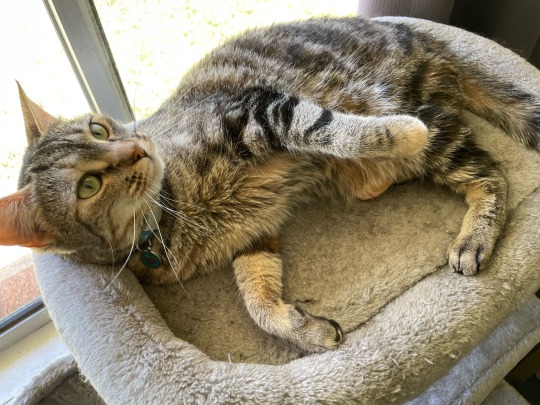
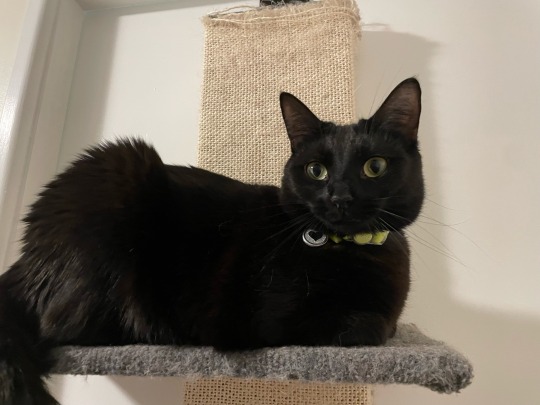
My two fluffy roommates! Both of them run on chaos and chutzpah, very Pinky and the Brain situation between the two of them.
Annie (aka Goblin Queen)
3.5 year old tortie tabby. Has random blotches of ginger, shades from silver/black tabby to brown/cream/orange tabby. Lanky and smol. Twenty kg of clever in a 4kg bag. The reason there are child-proof locks on the cabinets and stove.
Likes: Yelling at birds through the window, the fluffy bed on the left side of the couch, attempting to steal lemon yogurt, TUMMY RUBS, chikkin bikkit treats
Dislikes: vacuum, lawnmower, loud noises in general, when people come to visit and won't let her shed all over them, being held.
The Muppet/Rogue (she has two names and responds about as equally well to either of them)
2.5 year old medium hair void. Earned the nickname Muppet because she goes floppy and purrs when happy, especially when held. Seemingly boneless when happy. Not the sharpest potato in the drawer, even the vet admits it. Heart full of love, brain full of [DIAL TONE]. Big and fluffy and her fur is plush and dense. Originally named bc sneaky void, but tbh she also is not super wise though she is strong/hyper and sweet, and reminds me of the "REMY, WHAT'S A MANGA?" Rogue from X-Men ad from the Cerebro podcast.
Likes: Snuggling with her hind legs shoved into her human's armpit, the right side of the couch, yelling at birds through the window, attempting to steal bread, TUMMY RUBS, chikkin bikkit treats
Dislikes: new people, loud noises, being told "not for kitties", being thwarted, when Annie has claimed the fluffy bed and won't share.
They are both chirpy cats who don't necessarily meow normally. Annie started it and I think she taught Rogue her "dialect" as they're both from the local shelter and were adopted around 4-5 months old. They are squeaky chaos doofuses and I love them.
#black cats#cats of tumblr#Annie is too smart for her own good#even the vet admits Rogue is not smart#they are both adorable and I love them so
1 note
·
View note
Text
schlatt looks like a tigerstar clone
3 notes
·
View notes
Note


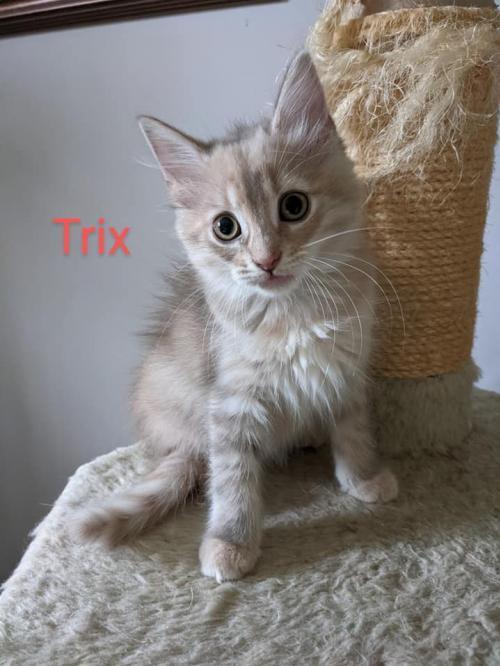

hi! i've been following your blog for a bit now and i love your posts about cat genetics. i was wondering if you could help me figure out the colors/patterns of these two pretty girlies.
for penny i was wondering if she could possibly be a diluted bengal since her spotted tabby markings look a bit rosetted.
for trix im not sure if she's a) a chocolate silver classic tabby/torbie or b) a fawn classic torbie. im leaning towards chocolate.
also here are the links to their profiles in case any of your followers are interested:
https://www.petfinder.com/cat/penny-53584807/fl/miami/furever-saved-fl1729/
https://www.petfinder.com/cat/trix-53333505/al/capshaw/forgotten-felines-inc-al143/
Penny is a beautiful red-spotted tabby with white, like this guy below!

from the photo you've sent, I'm not seeing anything that would indicate Bengal. I do see where you got confused because there are spot/stripes that are adjacent to each other in a way that could look connected, but that’s just how one copy of the spotted tabby gene + one copy of the mackerel tabby gene presents! rosettes have a dark outer outline and a light inner filling that is different from a cat’s ‘background’ colour
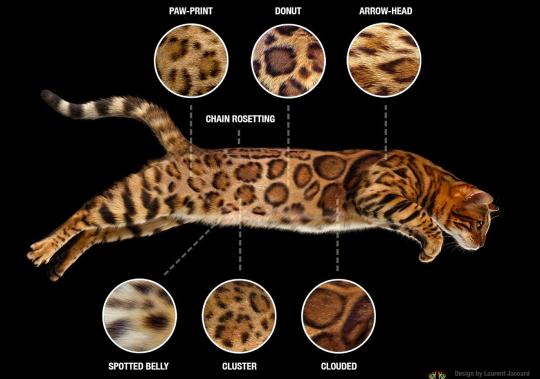
now onto Trix! fawn is a very rare colour, so unless the kitten is a purebred from a colour-oriented breed like Oriental Shorthairs, I wouldn’t consider that.
I don’t think she’s a chocolate silver torbie (chocolate + silver/inhibitor gene + tortoishell + tabby), because those tend to look darker and more.....well, chocolate!

she could be a blue silver torbie (dilute of black + silver/inhibitor gene + tortoishell + classic tabby), but her face looks quite light compared to the blue silver torbie below. it may just be the lighting in the photos, but none of the grey areas look particularly dark.

she’s pretty ambiguous, but I’m thinking lilac silver torbie? (dilute of chocolate + silver/inhibitor gene + tortoiseshell + classic tabby).
I wasn't actually able to find an example of this colouration online, but I did find a lilac silver tabby! if you pretend it has random blotches of cream areas, it does match up to Trix fairly well.

so you were very close with your chocolate silver torbie guess, just missing the dilution!
538 notes
·
View notes
Text

she does have some patches of white! she's a dilute, tricolor tortoiseshell cat, which actually makes her a calico, technically. the cream and white are so similar it can be very hard to tell them apart, and they are small, but noticeable in classic tabby areas like her muzzle, neck, belly, and paws. she also has strange, subtle tabby stripes on her tail.
interestingly, the distinction between calicos and torties is not so distinct, as the presence of white fur affects the presence of brindling directly because white fur is indicative of the speed at which an embryo individually grew.

white occurs where pigment cells did not reach the skin cells before the skin cells form a complete sheet of skin, trapping the pigment cells in place. if the skin grows quickly enough to cause patches of absent color, then x-inactivation will occur "early" and skin cells will multiply into more and more distinct patches.
i'm surprised by how brindled she is based on how much white she has. still, it happens with cats sometimes. generally one can expect a lot of white and distinct blotches of two other colors (calico) or a bicolor, brindled cat (tortoiseshell) -- but they're technically the same, genetically, because x-inactivation is random, so there are in-betweens. torties that end up with small white patches and a brindled coat like her are called torticos by some to address both the brindle and the presence of white.
13 notes
·
View notes
Note
Random question; is it possible to have a ginger and cream cat from a ginger blotched tabby mother and a cinnamon/cream father? Feel free to ignore this if you don’t want too answer :)
No because ginger and cream are the same gene, with one just being dilute. A cat can't be both dilute and non dilute
If you meant fawn instead of cream, since you said cinnamonn/cream, then you could have a cream and fawn cat (a fawn tortie). Again, not ginger and fawn because that would be both dilute and non dilute in one cat
31 notes
·
View notes
Text
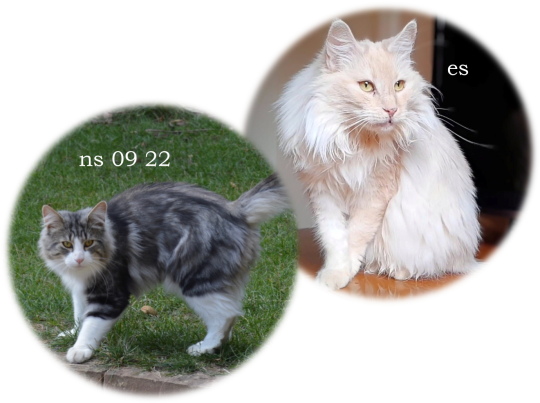
Black silver blotched tabby with white - ns 09 22
Genotype: A_ D_ E_ I_ mcmc oo/o- spsp titi wsw
Cream smoke - es
Genotype: aa dd __ I_ __ OO/O- __ __ ww
(What do these letters mean?)
#polls#tournament poll#round 1#nfo color tournament#black silver blotched tabby with white#cream smoke
38 notes
·
View notes
Text
Okay so I know there's always a lot of "Mungojerrie's a male calico and that's like insanely rare omg he's so special!" in the cats fandom. But that feels so weird to me because... well let me break it down. I have two arguments:
Firstly, I want to acknowledge a theory, one that the whole "calico Mungo=calico male=super rare omg!" thing quite unfairly ignores, a very very good theory I've seen floating around occasionally, that Mungo is trans. This is an excellent theory and I love it, though I personally don't hc Mungo this way (I have my theories on who in the tribe is trans, just Mungo's not currently one of them). It would definitely explain why a male presenting Cat would have a normally female-exclusive color pattern
BUT
and here's my second argument, what if calicos are NOT exclusively born female in the universe Cats takes place in?
Hear me out
Calico is defined as a pattern consisting of at least 25%-75% white, with at least two other colors. The two other colors are typically orange/red and black, but can be brown, grey, tan, cream, gold, lilac, blue-grey, etc. (To my understanding this doesn't include darker shades of the same color as often seen in tabbies, for example an orange base with darker orange stripes in a ginger tabby)
Now let's have a look at how many male Cats fit this description:
Mungojerrie

Of course, the obvious one, with the most easily recognizable calico pattern in a fairly even distribution of orange, white, and black
Plato/Admetus (name depending on production)

Carrot top boi with black and red blotches on a white base, pictured here with actual calico for comparison
Pouncival/Carbucketty

White base, with black, brown, and sometimes rust stripes and patches
Tumblebrutus/Bill Bailey

Same story as Pounce, pictured here again with actual calico
Macavity

This one depends on the particular production's costume, but in quite a few, including the 1998 video, he's got enough white to quality as well as black and gold stripes and sometimes patches on a mostly red base
Coricopat

Again, not all his costumes include enough white to qualify, but the majority of the ones I've seen feature plenty of white plus lots of black/dark brown and a decent amount of orange/gold stripes/splotches
Honorary Mentions: Some interpretations of Skimble have enough white and black to technically qualify, but I'm not including him here because it's not nearly so common as the others. Usually Skimble's white marks are less than 25%. There's also some argument for Admetus/George depending on production, but his greys browns and blacks are too similar for me, I think he's just a tabby, plus he doesn't always have enough white
Mungo's starting to look a little less special isn't he? (No offense Mungo, you're very special for other reasons)
Could all if these boys be trans? Absolutely! It's 100% possible these are all trans characters. Not my personal hc (again, I have my theories, and none of these are among them… currently…), but it's an entirely valid hc.
Could all these be interpreted as something else? Well, I guess potentially Mac could be seen as a red tabby and the black marks could represent dark red, and his different costume interpretations certainly complicate things. Pounce and Brutus could also be potentially interpreted as bicolor brown tabbies, but it's a lot harder to make that argument with them, especially with the flecks of gold or rust that are often included in their costumes, and that much of their color is in patches rather than stripes. Cori, ehhh I mean I guess you could argue he's supposed to be a hypermelanistic orange tabby, idk I feel like that's reaching at this point, but I guess that's a valid interpretation.
But Plato.
No.
There's no alternate interpretation.
Plato is a calico. End of story.
So in conclusion, I think calico males are actually a lot less rare in the Cats universe than they are in reality thank you for coming to my TED talk.
Bonus: three calicos and brown tabby being a fan club


Extra Bonus: Three calicos dancing in the dressing room


#Boy I hope Tumblr doesn't eat the images this time…#Mungojerrie#Plato#Admetus#Pouncival#Tumblebrutus#Carbucketty#Bill Bailey#Macavity#Coricopat#Tantomile#Rumpleteazer#George#Calico#Cats theorys#cats hcs#my hcs#cats musical#well tumblr effed up the formatting let's see if editing fixes it...#woohoo its fixed!#you don't know dude i been trying to post this for days!#FINALLY!!!
90 notes
·
View notes
Text
Kelusine Species Sheet
BASICS
Name: Kelusine
Height: 2’6”-6’0” at the shoulder
Weight: 900~ lbs-2000< lbs
Diet: Carnivore
Classification: Planetary, Natural, Non-Magic Sensitive, Sapient, Feral, Feline
Trainable: Yes
Temperament: Territorial, Protective, Energetic, Playful
Danger Level: Medium
Lifespan: 170-180 Kelusian Years
Litter size: 2-4 cubs
BIOLOGY
Morphology: Immense felines, they are quite similar to the big cats of Earth aside from their strong saber teeth (which range from 4-8 inches) and thumb-like appendages in place of their dew claws. Males have lion-like manes whereas the females sport a short mane along the nape of their neck. In certain subspecies that reside in colder regions (Mountaineers and Wastelanders), the females’ manes may extend to their shoulders and belly.
Subtypes:
Islander: The swimmers and climbers. Found in low level coast forests in tropical regions and, as their name suggests, on island chains connected by shallow expanses of ocean. The smallest species, this cat resembles a Cloud Leopard in structure and their ankles can rotate backwards, just like the real life cat’s. This enables them to climb down trees headfirst, climb upside down, or even hang by their back feet. These cats reach only two and a half feet at the shoulder.
Plainer: The runners. The second smallest in shoulder height (4 ft), yet the second longest (14ish feet) thanks to their lengthy tail, Plainers are built purely for speed. Living on the wide open grasslands, they rely on quick bursts of speed to take down their prey. Their long tail acts like a rudder, just like a cheetah’s would, which enables them to make sharp turns with minimal warning.
Forester: The jack of all trades. An intermediate of the five subspecies (4 ½ feet at the shoulder), Foresters resemble the tigers of Earth in build. Strongly built without sacrificing speed, Foresters live in, you guessed it, forests. They prefer hardwoods with mixed pines, but can adapt to Alpine forests or mid-latitude jungles and woodlands.
Mountaineer: The jumpers. Closely resembling snow leopards or mountain lions, Mountaineers are found in similar environments; high altitude snowy mountains. Thick fur keeps them warm in the frigid air, and a thick tail helps them balance while chasing prey across steep slopes. Unlike snow leopards, however, Mountaineers are immense and rank #2 height (5ish feet) and #1 in length from nose to tail tip (16ish feet).
Wastelander: The bone crushers. Unlike the other subspecies, which have body types based primarily on existing big cats, Wastelanders get their inspiration from smilodons and grizzly bears. Built for pure power with strong shoulders and immense front paws, Wastelanders are the largest of all Kelusines with shoulder height measuring six feet and even seven in rare cases. They are also the only subspecies with a short tail.
Colors:
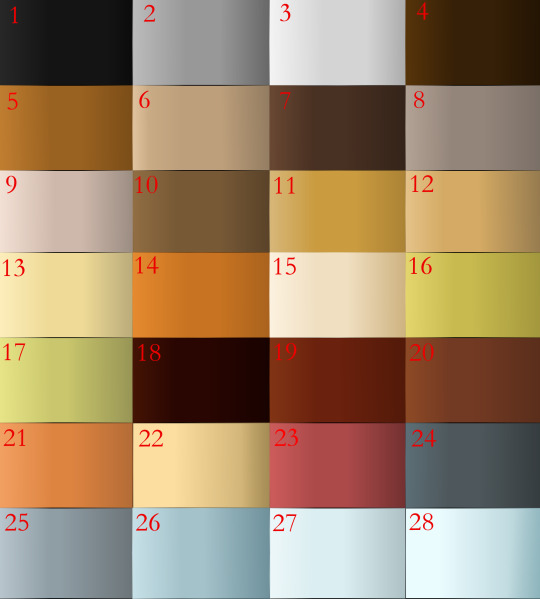
Standard:
Black
Grey
Silver
Brown
Light Brown
Tundra
Chocolate
Lilac
Fawn
Brown Ash
Golden
Tawny
Cream
Orange
Peach
Green Ash
Yellow Ash
Russet
Russet Brown
Cinnamon
Red
Strawberry
Red Ash
Blue
Blue-Grey
Chinchilla
Moonstone
Blizzard
Modifiers:
Colorpoint: Dilutes the base while leaving the extremities (face/tail/paws) normal
Reversal: Switches the color of the base coat and markings (ex: black with white stripes)
Light: Turns the inner marking of rosette/smeared/clouded/snow spot lighter than the base coat
Pied: White covers 25%-90% of the beast in solid patches
Splatter: White “paint splatters” cover 10%-50% of the beast
Tortoiseshell (Female only): The “red” gene is active and causes discoloration in patches.
Patterns:
Standard:
Common
Blotched Tabby
Brindle
Mackerel Tabby
Plain (no pattern)
Spotted Tabby
Ticked Tabby
Uncommon
Cheetah
Clouded
Dapple
Ocelot
Speckles
Rare
Double Dose (Spots on body and stripes on extremities)
Rosette
Snow Spot
Wild
Mutations:
Chimera (Two different base colors and markings)
Split (Two marking types)
Albino
Melanistic
Fallen Snow (Sabino along dorsal side)
Drift (Sabino along ventral side)
Glitch (Markings are broken and missing in some places)
Mist (Markings fade towards dorsal side)
Fog (Markings fade towards ventral side)
Storm (Markings in thin vertical bands)
Physical Mutations:
Mane:
Razorback (mane continues to tail)
Rimmed (mane along forelimb and back limb undersides; not found in Islanders or Plainers)
Curtain (long fur resemble horse mane; not found in Islanders or Plainers)
Static (Long and stiff along spinal area)
Scruff (Longer chin fur; standard Wastelanders)
Tail:
Bobtail (Stump)
Angel (longer silky fur)
Short (Akin to a wolf; standard for Wastelanders)
Ears:
Pointed (triangular rather than semi-circle; standard for Islanders)
Tufted (Lynx-like; standard for Wastelanders and Mountaineers)
Horned (Curl backwards)
Folded (Folded downwards)
HABITS
Habitat: Thanks to the abundance of specialized subspecies, Kelusines are one of the most diverse species in terms of location. They can be found almost everywhere apart from the far poles, deserts, and swamps. Large carnivores, they require an area rich in prey and thus control large swaths of territory either as a clan or as individuals.
Diet: Hypercarnivores, Kelusines require meat. They are not picky when it comes to meat, although shy away from carrion or cannibalism and a vast majority will not eat humans. One exception is the Wastelander subspecies, who will eat whatever prey they can catch. And humans are easy prey; dumb and slow.
Intelligence: Kelusines are one of the most intelligent animals of Kelusia. Like most creatures, they can speak Basic, or English. However, they are one of the few species that can learn languages other than their own and Basic. Kelusines are also one of the few that can operate high level technology. Some actually possess a Communication Watch on their wrists. Able to comprehend advanced math and science, Kelusines still prefer subjects that deal with history, natural science, and technology.
Social Life: Social creatures, wild Kelusines often live in small prides that consist of 5-7 individuals. However, sometimes to expand their territory, prides will join and make larger groups, or clans, of around 10-20 individuals, depending on the amount of prey available. When in clans, Kelusines have a ranking system to help things flow smoothly within the clan. The “head” positions are the Leader, Medic, and Deputy. Below that is the bulk of the clan, divided further into equal subgroups: Scouts, Operators (tech), Hunters, Guards, Milk Givers, and Elders. Below that rank the Trainees, who are the Kelusines ages 4-12 years, and finally come the Cubs, or Kelusines under the age of 4.
Life Cycle: Kelusine females carry for 9-10 months. There are 2-4 cubs in a litter, on rare occasions 5. The cubs are born helpless and cannot see or hear a week after birth. It is not uncommon for an expectant mother who resides alone to seek out a clan who will let her stay with them the first week or so after her cubs’ birth. She does this to ensure that her cubs are not killed by a rival or possibly a jealous male.
At two weeks, Kelusine cubs are stumbling around on stubby, unsteady legs. By now they can hear and see. They resemble fluffballs on sticks, their fur soft as down feathers. At three weeks, they can walk on their own without trouble and are play fighting with littermates or cubs near the same age if there are any. Around two months they are introduced to solid food. However, they continue to nurse until they are 9 months. At two years they begin to learn how to hunt for their own prey. They are usually taken out by both their mother and father if in a clan. If not, the mother or an older sibling will take them.
Kelusines are considered cubs until year four. By that time they are the size of a teenage tiger or lion. From year four to twelve they are considered adolescents. By now they are about the size of an adult lion or tiger. During the teenage years, Kelusines’ manes begin to grow. Their saber teeth also grow longer and stronger. Unless they grow up as rouges or loners, Kelusines begin to learn the basics of fighting at age twelve. If they were born outside of a clan, Kelusines often learn to fight sooner.
At sixteen years, Kelusines can make it on their own with no extra help. However, they are not considered full adults until age twenty. Females mature, both sexually and mentally, faster than males. They are considered mature at eighteen, while it takes males until year twenty. After a Kelusine reaches age twenty, they may leave to explore or may look for a job as a mount.
Kelusines are a unique species in that they are biologically immortal. The oldest Kelusine on record, a Forester by the name of Powerful Huntress of the Mountain Pass Pride, reached 220 Kelusian Years. However, most Kelusines only make it to 160-180 KY due to an oddity within their genes that becomes active around that age and produces similar symptoms to the viral infection rabies. Instead of intense fear, the Kelusine will become extremely aggressive, attacking anyone and anything in sight. This is not contagious, as it is not an infection, but there is also no cure for the affliction referred to as “Old Age Rage”. The only way to stop an OAR Kelusine is, unfortunately, to kill the beast.
Vocalization and Body Language: Like many of Kelusia’s unique fauna, Kelusines can speak Basic but also, as said earlier, have a unique ability to learn other languages such as Ragera. However, when they talk it is noticeably more guttural and rough compared to human speech. Aside from being able to speak “civilized” languages, Kelusines can make a wide variety of feral sounds. They have the ability to roar, snarl, growl, chuff, cough, groan, and hiss. Younger Kelusines can purr, but they do not have the ability to roar until age 5. Islanders and Plainers cannot roar no matter their age, but instead, like cheetahs, can purr through adulthood.
Kelusines are also heavily reliant on body language. Their body language heavily mimics the tigers of Earth. A calm Kelusine has a relaxed body posture, and the tail hangs languidly. When curious, their tail will be raised high in the air and their ears will be forward in interest. An aggressive Kelusine will bare its teeth, widen its mouth, enlarge its pupils, and flatten its ears.
OTHER
Ridability: Very human-like in their intelligence and readily available, Kelusines are not hard to come by. Kelusines are perhaps the most common mount as living with riders ensures a constant, easy food source while also making sure they get their exercise. That being said it is crucial for riders to understand Kelusines are not pets. Rather, they are companions who have agreed to carry the rider on their back. It is also important to keep in mind that, while Kelusines do have the intellectual capabilities of a human or higher creature, they are still highly dangerous predators who can turn on you if they so please. So treat them well.
Common Uses: Mounts, Guards, Guides, Rangers.
2 notes
·
View notes
Text
Rexy's Cats OCs Part 6: Deuteronomy's Family
Deut has a huge effing family, and I'll only be discussing the most story significant members in any sort of detail here. Even so this will probably be my longest OC bio post yet. Skip to the end for a list of Deut's siblings and a list of Deut's children
Beware: Long Post
Sandalphia
(sand-al-FEE-a) Tugger's mother, and Mac and Munk's stepmother. I can't tell you much about her without spoiling an entire story arc, but I'll try to lay out what I can
Very sweet, loving, attentive mother to both Tugger and and her stepson Munk (who is 3 when Tugger is born btw)
Doesn't get on with Mac (13 when Tugger is born) for some reason
Possibly just isn't good with teenagers??
Joined the tribe as a young adult and promptly fell for Deut
Didn't end up getting together with him until over a year after Griz left (when Munk was 3 months old)
Isn't still around, but I'm not telling why
Ummm okay yeah I think that's all I can really say atm. On to the stats!
About Jenny's age or so
Average build and just a little bit short
Smooth, very short fur
Honey-colored with black/brown rosettes and marble patterns
Hazel eyes
Nickname: Sandy
Matethon
(MAT-e-thahn) Sandy's brother. Other than basic appearance I can't tell you much more than that he exists and he comes to live with her and the family for a while
Tallish and heavy
Short fur
Cream with light brown rosettes and stripes
Blue eyes
Nickname: Mat
Meganterea
(meg-an-TARE-ree-a) Macavity's mother. Again can't tell you much without spoilers
Kind of a rebel in her own way
Not really like anti-authority just does her own thing and doesn't give a damn
Has some mental health issues, including depression, that she has difficulty dealing with
Got kicked out by her parents as a teen and was taken in by Griz's family (Griz was a young girl at the time)
The relationship with Deut didn't work out but they stayed amicable
Didn't stay with the tribe after Mac was born, but visited for the Jellicle Ball, and Deut visited them at their new home often
Eventually Mac was brought back to be raised by Deut in the tribe when he was five, but I'm not telling why
At least a decade or more older than than the older queens of the current tribe (Jenny, Jelly)
Tall and thin
Short, wiry fur
White with blotches of red and gold tabby patterns
Dark green eyes
Nickname: Meg
Balthazar
(BAL-tha-zar) One of Deut's younger brothers, his best friend, and his right hand tom once he became leader of the tribe. Died in the same event that killed Arbutus and Cety's family (see Part 2)
Kind, friendly, and jovial
Was Chief Protector until his age started effecting his performance, at which point he handed the position down to Panphagia (Taro's grandmother) who eventually handed it down to Taro (see Part 3)
Takes his job very seriously, and continued to participate in Protector business after stepping down as chief
For everything else though he's a big sweetheart
Will laugh just because
He, Deut, and Diddy (see below) used to get up to all kinds of mischief as kits and young adults
Something happened (not telling what) in their young adulthood that woke them up to the harsh realities of the world, prompting Deut to start taking his position as heir, shaman, and caretaker of the tribe more seriously, and Balth started taking his own role as a deputy Protector (at the time) more seriously
But they still had fun together whenever they could ^^
A little younger than Deut
Tall and burly
Mid-length shaggy fur
Brown with grey spots
Warm brown eyes
Nickname: Balth or Bal
Methuzelah
(meth-OO-za-lah) Deut's father. A young shaman that fell in love with the heir of the tribe (Deut's mother) when she returned home from traveling the world. He and Deut's mother had four sons together, Deuteronomy, Didymus, Balthazar, and Nimravod, and he also had an older son named Nebuchadnezzar.
Stoic and aloof
At first glance...
Actually a silly billy when you get to know him
He's just shy
Total sweetheart
Adorkable
Will pose dramatically and make funny noises just to make you laugh
Bonus points if he's doing his serious business important shaman face and the silliness just comes out of nowhere
Loves both Deut's mum and Siri (see below) with all his heart
Loves all of his children dearly
That includes his stepson, who he considers his own son he does not except constructive criticism.
Ganzo (the stepson) has always called Thuzah his father and was a little disturbed to find out he was actually his stepfather. Thuzah explained to him that it didn't matter to him what tom helped make him, Ganzo is his son no matter what
"I'm your father. I'll always be your father. We may not share the same blood, but you are my son, and I am your father. Don't let anyone tell you different"
This silly shy dork was also quite wise
Deut got it from somewhere ¯\_(ツ)_/¯
Really freaking old
Like mid twenties when Deut was born, so more than two decades older than Deut, who is already really freaking old
Big and tall
Like... large
Short, scruffy fur
Silver tabby
Basically he looked rather like Munk, except he was a very big boi
Big scruffy silly shy silvery boi
Dark golden brown eyes
Nickname: Thuzah (THOO-zah)
Sirindhorna
(sih-rin-DHOR-nuh) Deut's mother's lover whom she met while traveling. When Deut's mum returned to the tribe, Siri came with her, where they both ended up falling for Thuzah as well. She had two kits with Thuzah, Sasithorn and Artaxerxes.
Strong, fierce, and determined
Was a mercenary for most of her youth
Joined the tribe's Protectors after she came home with Deut's mum
Eventually became Chief Protector
Major mama bear vibes
Will utterly destroy anyone that threatens her children or her mates
And she'll make it as unpleasant as she can get away with
Loves her stepkits every bit as much as her bio kits
And Deut and the other stepkits love her like a second mother
Trained (and was particularly close to) her stepson Balth and eventually passed the position of Chief Protector to him
Actually really chill and sweet with her family
But still feisty
Has a mischievous streak
Used to love getting into trouble with Deut's mum
Also really freaking old in the current timeline (if she's even still alive)
Slightly older than Thuzah (who may also not still be alive)
Tall and lean
Soft, short fur
Colorpoint, as in creamy white with chocolate brown face, ears, tail, feet, and hands
Yeah I know she's a dessert leave me alone I was hungry when I wrote this
Deep, ocean blue eyes
Oh btw she's not just a Siamese patterned Cat, she's from actual Thailand (formerly known as Siam)
Nickname: Siri
Siblings
Deuteronomy had one older sister named Sasithorn (SASS-ih-thorn or sehs-ee-TAWN, she'll respond to either) aka "Sassy"
He also had six brothers including:
Two older brothers named Nebuchadnezzar (neb-uh-kuh-NEH-zer) aka "Neb" and Ganzorig (GAN-zor-ig) aka "Ganzo"
A twin brother named Didymus (DIH-dih-mus) aka "Diddy"
And three younger brothers named Balthazar, Artaxerxes (ahr-tak-ZERK-zees) aka "Artax" and Nimravod (NIM-rav-odd) aka "Nimra"
Neb is Thuzah's oldest son from another queen. Ganzo is oldest son of Deut's mother from another tom. Sassy is the daughter of Siri and Thuzah, and Artax is their son. Nimra is the youngest of the eight siblings, younger than Artax by several years. Neb is the oldest, followed closely by Ganzo, then Sassy. Deut and Diddy are in the middle, and then Balth came right after them.
Children
Mac, Munk, and Tugger are actually the youngest of Deut's children (that he's aware of). He's had eight children (again, that he knows of), who are in order of birth:
Jublepurria (Joo-bul-purr-ee-ah) "Juble" a daughter that left the tribe as an adult to join a tribe her lover belonged to (Deut was sorry to see her go but was thrilled to see her so happy)
A set of twins, one girl, Scansoroura (skan-sor-ROAR-ah) "Sora" or "Aurora",
and one boy, Oryctonyx (or-rick-TAW-nicks) "Rycto" whose mother raised them away from the tribe because she didn't want them to bear the burden of being the leader's heirs
Silvacola (sil-vah-KOH-lah) "Silva" a daughter who also is no longer with the tribe
Lestobrady (les-toh-bray-dee) "Lesto" a son who was one of the victims of the same event that killed Arbutus, Cety's family, and Balth
Macavity
Munkustrap
Rum Tum Tugger.
Except for the twins, they all have different mothers. After all, it is canon that Deut got around...
---
Hnm? What's that?
…Why aren't I talking about Deut's mother? Hmm, well…
I'm not telling (:
Part 1 Part 2 Part 3 Part 4 Part 5
#oc bios#i should perhaps clarify Munk was 3 months old when Griz left#Sandy got together with Deut when Munk was about a year and a half old
0 notes
Text
What Color Is Your Cat?
Domestic cats come in four main colors.
Red / Orange (x)

Light Brown (x)
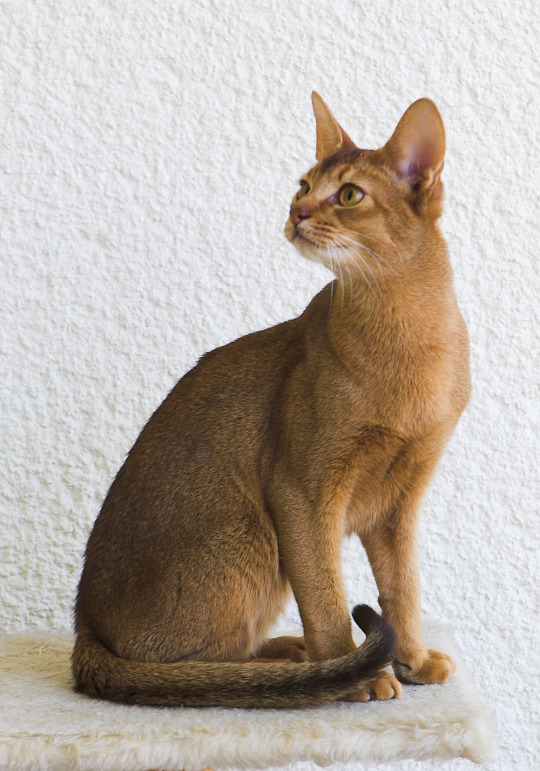
Dark Brown (x)
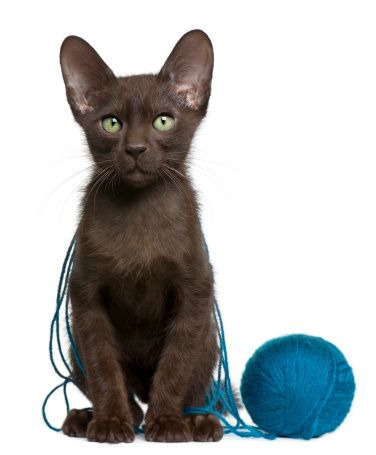
and Black (x)
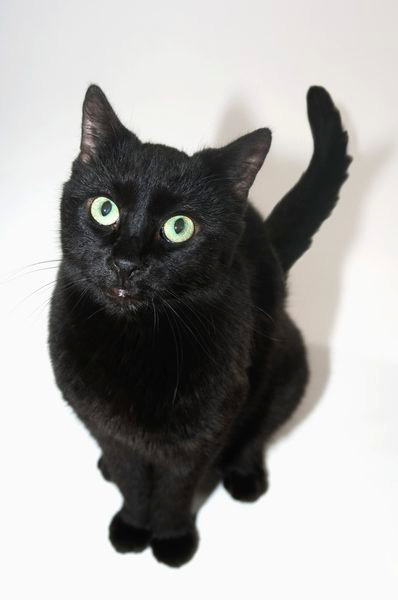
These four basic colors are the “deep” colors. This means the individual fur hairs have the color pigment all the way down the shaft. This creates a beautiful, “deep” color.
However, when the gene for agouti hairs is active, the pigment will instead gather in bands along the hair shaft. This creates a lovely “dilute” color that, to the naked eye, appears paler than the deep, nonagouti hairs. (x)
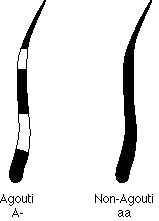
Instead of Red, you get Cream (x)
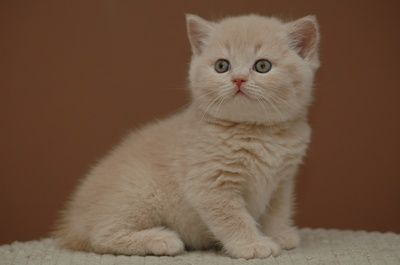
Instead of Light Brown, you get Fawn (x)
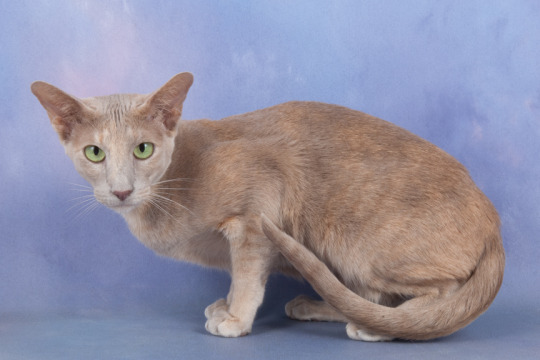
Instead of Dark Brown, it’s Lilac (x)
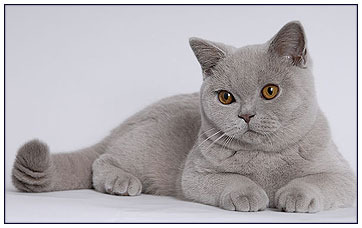
And instead of Black, it’s Gray / Blue (x)

There are also two special case colors. The first is white. White cats still contain the genetic markers for a non-white color, but the “white gene” masks that color and makes the hairs white.
The second special color is silver. A mutation that can happen to cats with any genetic color predisposition, it removes the yellowish or tannish pigment from the hairs, leaving them a beautiful silver instead. (x)

Except for black and gray, it usually takes special breeding to get a cat that is a solid color. Most cats will have a combination of colors and markings that makes them beautiful and unique.
Since they have a common ancestor in the African Wildcat, all domestic cats carry the gene for a tabby pattern. (x)
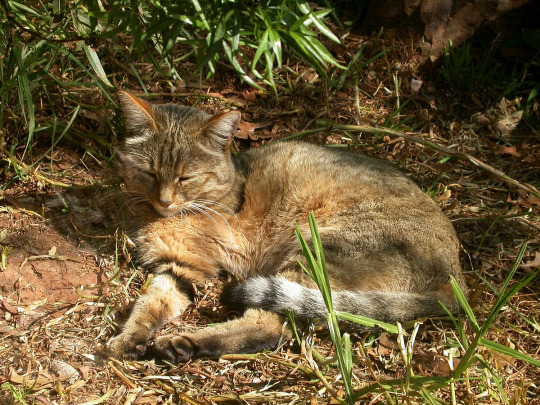
Even solid-colored cats will sometimes show a “ghost tabby” pattern under the right light, especially as a kitten. (x)
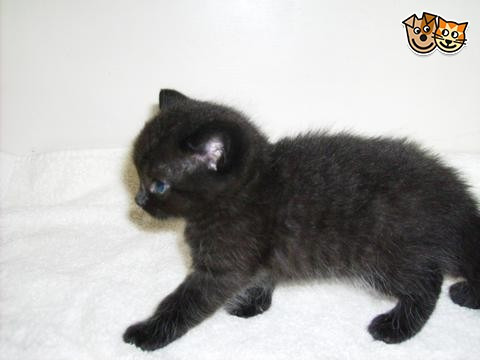
Patterns form when agouti hairs and nonagouti hairs gather in various patches, stripes, and dots on the cat. Where the nonagouti hairs gather, the cat will appear darker, and where there are more agouti hairs, the cat will appear lighter.
Is your cat a tabby?
As mentioned above, all cats carry the gene for the tabby pattern, though it is not always visible. There are four main kinds of tabby patterns.
Mackerel Tabby (x)
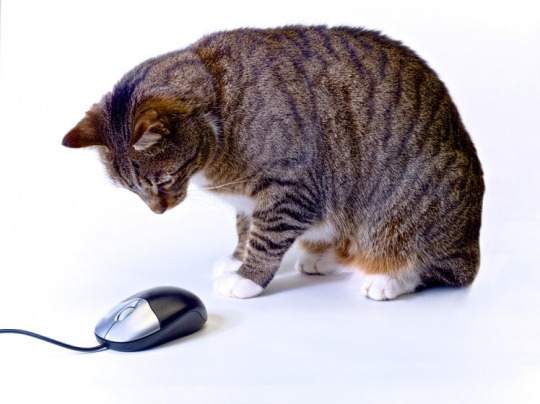
The original tabby pattern, it is so called because the stripes down the sides resemble the bones of a fish.
Classic Tabby (x)
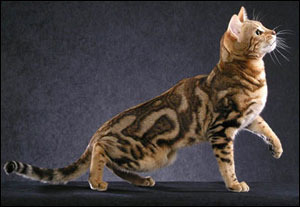
Also called a “blotched tabby.”
Spotted Tabby (x)

This pattern only rarely shows up in the domestic short- and longhair breeds. It usually requires special breeding to bring about.
Ticked Tabby (x)

A cat is considered a ticked tabby if her fur is almost entirely agouti hairs and has minimal visible pattern.
All tabby cats have an M shape on their foreheads. (x)
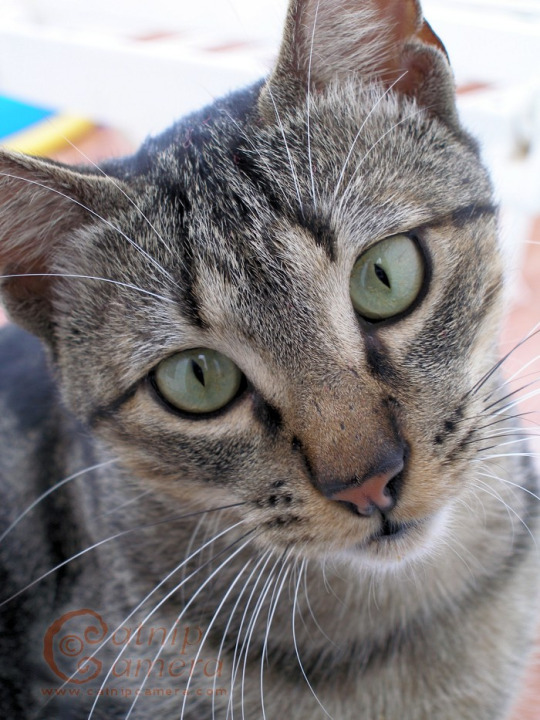
White patches? It’s piebald!
Piebald simply means your cat has white on it, but isn’t all white. There are different terms for piebald, or particolor, cats depending on the amount and placement of the white vs. the color.
Van (x)

Mostly white with patches of color mainly on the head and tail
Bicolor (x)
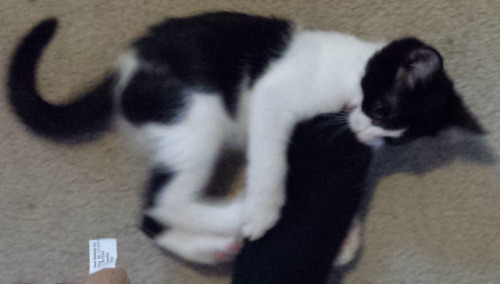
One to two thirds white, bicolor cats usually have color markings on their heads and torsos as well as tails.
Mitted (x)
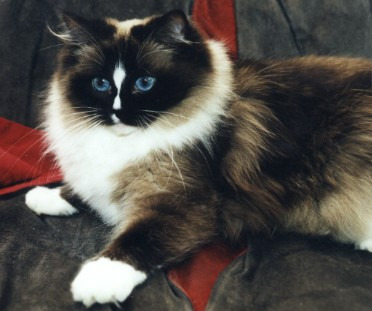
While mitted cats, obviously, have white on their paws, they can also have white on their chin, chest, belly, and back legs.
Lockets (x)
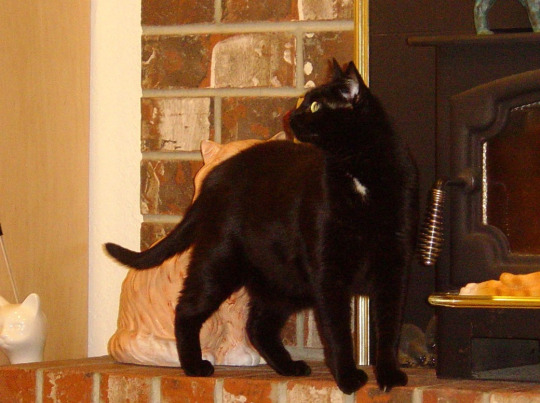
As you can see, the white patch looks like a locket on a necklace sitting on the chest. Small white patches can also be referred to as “buttons” and appear in other places on the body.
But wait... My cat is more colorful than that!
Tortoiseshell, or “Tortie,” patterns appear when a cat has two different color genes in her DNA and neither is dominant over the other. These colors are usually red and black, though other combinations can appear as well. Since the color gene is carried on the X chromosome, only female cats can exhibit tortie patterns. (The exception being an XXY intersex condition, but those males will be infertile.)
There are several tortie patterns...
Tortoiseshell (x)
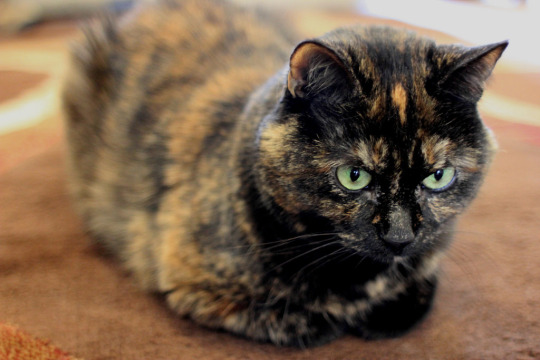
Classic red and black. Beautiful!
Calico (x)

When a tortie has patches of white, she’s called a calico.
Torbie (x)
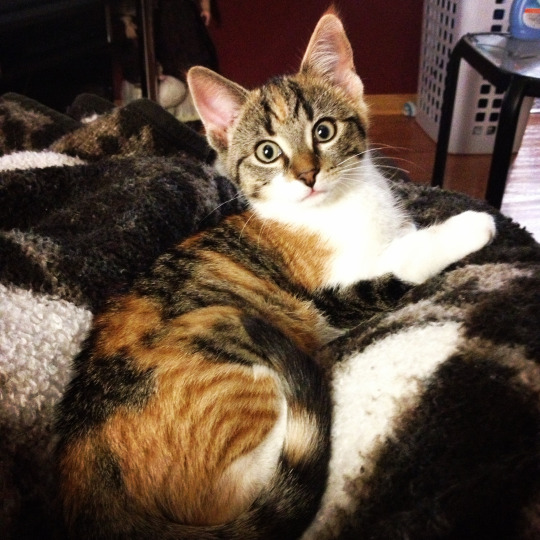
A tortie cat with a visible tabby pattern is called a torbie or patched tabby.
Pointed Cats
They’re not sharp and pointy--well, not more than any other cat. No, the term “pointed” refers to the fact that these cats have light-colored bodies with darker color appearing only at certain “points.” (Yeah, I would’ve come up with a better name too, but it’s stuck now.)
When thinking of a pointed cat, most people will think of the Siamese cat breed. They are pointed, but not all pointed cats are Siamese.
Colorpoint (x)
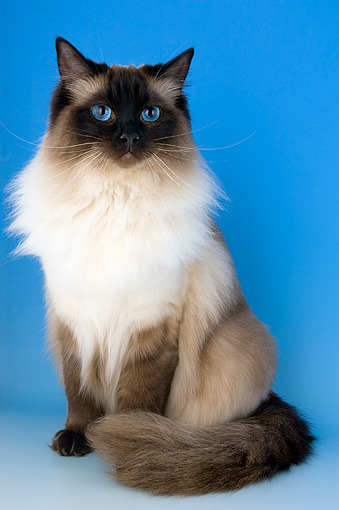
The darker patches are solid or unpatterned.
Tortie Point (x)
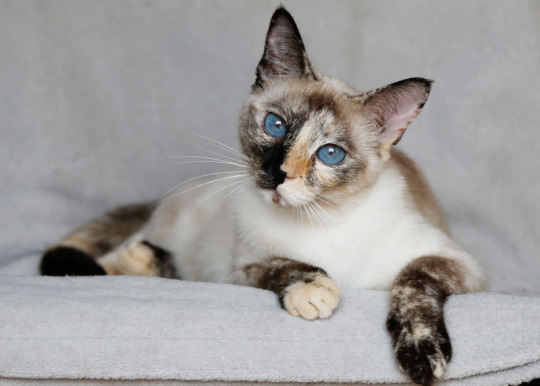
The darker patches have a tortie pattern.
Lynx Point (x)
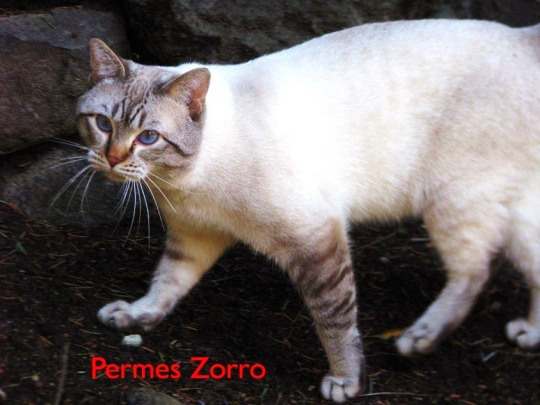
Lynx point patterns have stripes on the darker patches.
Tortie Lynx Point (x)

A combination of the tortie and lynx characteristics.
So, now that you have all the information you need, tell me
What Color Is Your Cat?
274 notes
·
View notes